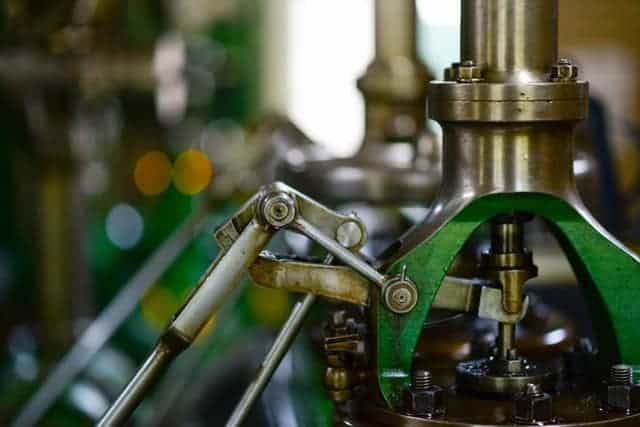The Internet of Things (IoT) has moved beyond the hype phase and is well on its way to achieving mainstream adoption. Specific to Asia Pacific, its IoT market is projected to grow at a compound annual growth rate of 11.3 percent to reach a market size of US$95.7 billion by 2022.
The manufacturing industry is one of the key drivers of IoT spending in the region. Studies have found that majority of manufacturers in Asia Pacific have not only implemented but also planning to expand the use of IoT in their operations to stay competitive.
A key reason for doing so is to optimize operations. According to McKinsey, IoT in manufacturing – which is also known as industrial IoT (IIoT) – has the potential to capture productivity gains worth US$216 billion to US$627 billion. By embedding sensors into machines and systems in their factories, manufacturers will be able to gain a comprehensive view of the end-to-end production process in real time. They can also use the IIoT sensor data to quickly address bottlenecks and make adjustments to reduce waste and improve operational efficiencies.
Connected inventory systems, for example, provide manufacturers with the ability to monitor their inventory in real time to minimize the risk of supply disruptions. Historical data from these IIoT systems also allow manufacturers to predict and decide future inventory needs more accurately. With these capabilities, manufacturers will be able to realize a demand-driven inventory planning and potentially reduce their inventory costs by 20% to 50%.
Additionally, IIoT can help manufacturers to achieve zero downtime by empowering them to perform the right maintenance routines. This is crucial to asset-heavy companies as unplanned equipment outages can result in significant losses in revenues and productivity. Some of the leading automotive manufacturers estimate that every minute of unplanned downtime could cost them as much as US$15,000 to US$20,000, and that a single downtime event could cost approximately US$2 million.
Preventing costly equipment downtimes require manufacturers to process and analyze time-series (or real-time) sensor data from their IIoT systems. By doing so, they will be able to identify warning signs of potential problems (such as detecting signs of mechanical wear and degradation before they become apparent), predict when a piece of equipment requires maintenance, and get it serviced before it causes downtime.
Turning IIoT data into gold
An IIoT initiative is only as good as the manufacturer’s ability to process and analyze the wealth of data it provides. As such, manufacturers in Asia Pacific that are looking to take advantage of IIoT need to address the following challenges effectively:
- The massive volume and variety of IIoT data
Data streaming from IIoT systems can generate petabytes of data. Since those data will come in diverse formats, standards, and protocol, it can be challenging for manufacturers to ingest it.
- IIoT needs diverse analytical and predictive modeling capabilities
Predictive modeling capabilities are vital to delivering insights. However, they require a wide range of analytical options (including machine learning), which may not be offered by existing big data platforms.
- The complexity of analyzing streaming data in real time
Generating value from IoT entails effectively managing both data at rest as well as data in motion. In fact, the success of IIoT deployments depends on the manufacturer’s ability to gain insights out of all this fast-moving, high-volume data. For instance, continuous monitoring and predictive maintenance require manufacturers to be able to effectively ingest, store, and process the data streaming in from sensors in real time or near-real time in order to instantly deliver insights and action.
Despite the importance of this capability, a recent report by AOPG Insights and Cloudera found that 82% of ASEAN organizations are not processing data in motion. Respondents cited security and complexity of data as two of the top 3 obstacles to implementing real-time analytics.
A scalable, real-time, end-to-end streaming data platform — which ingests, curates, and analyzes data to deliver key actionable insights — can help manufacturers overcome the complexities of IIoT. It does so by enabling manufacturers to:
- Manage, control, and monitor the edge for IIoT initiatives.
- Adopt a no-code approach to create visual flows for building complex data ingestion or transformation with drag-and-drop ease.
- Manage and process multiple streams of real-time data at high volume using advanced techniques, to generate key insights for predictive analytics.
- Track data provenance and lineage of streaming data.
Zoomlion, a Chinese manufacturer of construction machinery and sanitation equipment, is one company that has reaped the benefits of an end-to-end streaming data platform. The platform allows it to ingest, store and process data from its connected machines, internal core business systems, and third-party sources. With the ability to continuously analyze equipment operations, detect potential failures, and provide fault warnings and operational statistics, Zoomlion managed to reduce its manpower and maintenance costs by 30 percent. Insights from analyzing IIoT data also allowed the company to offer new services, which led to a 30 percent increase in value-added service revenue.
Faced with talent shortage and rising operational costs, manufacturers in Asia Pacific are increasingly embracing IIoT to improve operational efficiency and realize cost savings. Since the value of IIoT lies in the data they generate, manufacturers will need to be able to effectively manage and analyze the massive amount and variety of sensor data in order to fully benefit from IIoT.
Andrew Psaltis is APAC chief technology officer at Cloudera.



